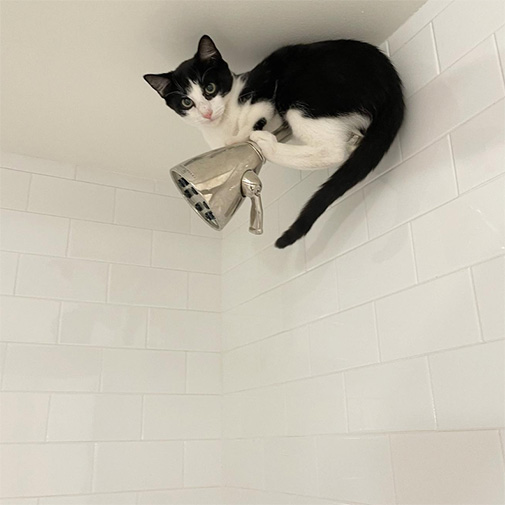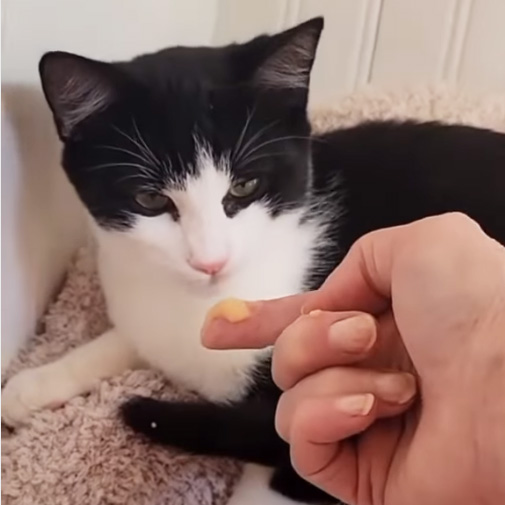Big Blonde = Food and Fun
The Beth Stern Socialization School for Sassy Kittens
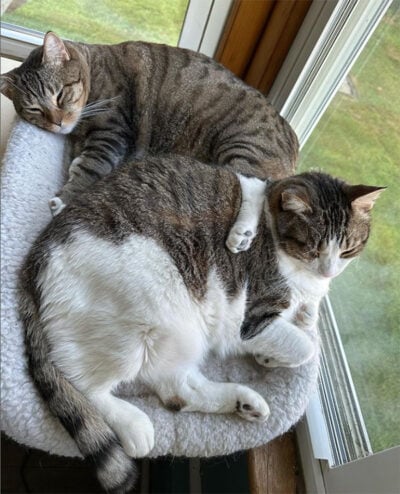 I’ll never forget Fig and Dumpling, two of the most challenging kittens ever enrolled in my socialization program. When they arrived in my guest bathroom in 2016, they were beautiful but emaciated…and they were manic! They scaled the walls, peed and pooped everywhere, and ripped the curtains off the windows.
I’ll never forget Fig and Dumpling, two of the most challenging kittens ever enrolled in my socialization program. When they arrived in my guest bathroom in 2016, they were beautiful but emaciated…and they were manic! They scaled the walls, peed and pooped everywhere, and ripped the curtains off the windows.
The weather further complicated their situation. It was the middle of a brutal winter, and I knew I couldn’t neuter and release them back into the cold. It took months and lots of hand-feeding treats and just sitting in that small bathroom with them until they associated me with toys, treats, and meals — delivered on the end of a long wooden spoon.
Thus, the title of this blog: “Big Blonde = Food and Fun!” Socialization is all about helping them associate good things, like food and play, with humans. Part of the process involves slowly trying to touch them with the tip of the wand from their favorite toy, then replacing the wand with your hand. Carefully! The next step is petting and then attempting to pick them up. With older kittens who have never been close to humans, it can take months of doing this over and over and over. There are good days and bad ones. It’s difficult and frustrating. And with Fig and Dumpling, there were multiple scratches — a big one on my face when I got too close for comfort. But I didn’t give up on them because I saw that look in their eyes that told me they would get there.
Though they never let me pick them up, after six months and many hours together, I was able to pet them and get close to them. The most rewarding days were when they finally let me touch them. And then, like magic, they turned a corner and started to return my slow blinks. I always make eye contact and blink over and over. When I get blinks back, I know we’re making progress.
Then I heard them purr and knew they were ready to fly. I had to choose a family who was cat-experienced and who understood that they might never become cuddly house cats. And boy, did we find them the perfect adopters! Now @figanddumpling is one of my favorite accounts to follow. And guess what? They are now lap cats who sleep on the heads of their super patient forever Mom and Dad! I am so glad I never gave up on them!
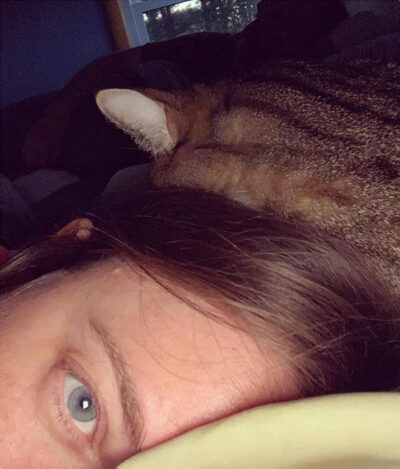
Mom “enjoying” naptime with Figgy. #feralfail
October 16 is National Feral Cat Day, an important date on my calendar. At the moment, I’m working with five-month-old brothers Peter and Parker. While making progress here, they presented me with a hard dilemma. With 20 fosters in my house, I didn’t have the necessary time to devote to these two, so I sent them to Lauren, a rescue friend in Massachusetts who specializes in kitty socialization. And just like that, they are almost ready to fly.
Peter went from his perch on top of the showerhead at my house
to eating from Lauren’s hand.
Peter and Parker’s backstory provides some valuable lessons for feral and semi-feral rescue. A friend had been feeding them in her garden for 14 weeks. They played with her and let her get close. I asked her to trap them for me to save them from the harsh winter ahead. At five months, socialization is a challenge. So, please, if you see young kittens, rescue them to begin socialization as soon as possible.
With all the spitting, lunging, and trying to bite if your hand gets too close, it’s difficult to know who is scared and who is truly wild. Kittens five to eight weeks old are generally just frightened and are fairly easy to socialize. Older kittens, 12 weeks to six months old, can take much longer — and it might never work out. But, when I look into their eyes and sense there’s a sweet kitty in there — when I feel they are just petrified and not used to people or human touch — my gut tells me who to take a chance on. And it’s been right…most of the time.
But not all my efforts end in success. Sadly, I’ve had to release two fosters who were rescued straight from the streets. I thought they had the potential to become friendly but after working many hours with them, hoping they would come to enjoy being house cats, it pained me to see they had zero tolerance for humans. It’s difficult to come to the realization that some cats prefer a life outdoors and the kindest thing to do is respect who they are and set them free. This is not something I take lightly. I seek guidance from my cat expert friends to help with that decision. Dorit Shani, the feline behaviorist at Animal League America, is someone I contact frequently with so many questions regarding the “tricky” ones. Thank you, Dorit, for your guidance, expertise, and encouragement in helping me help so many!
Even though those two kitties were my only direct experience with TNVR — which stands for Trap, Neuter, Vaccinate, and Return — I really appreciate how valuable this practice is for managing community cat colonies…which I leave to other passionate rescuers! Animal League America supports TNVR in various ways, including through its SpayUSA program, which provides spay/neuter subsidies for individuals across the country. We’re also saving so many lives through our work in the Adirondack region of upstate New York. Likewise, our Community Outreach program, designed for people in the local community and surrounding area of Port Washington, NY, provides things like equipment rental, in-person training, low-cost feral houses, a food bank, and educational materials. Learn more at animalleague.org/CommunityOutreach.
Community cat caregivers are heroes. They work so hard and rarely get the thanks they deserve. But I’m sure they feel tremendous personal satisfaction, and I imagine like everyone involved in rescue, they experience “helper’s high,” that exhilarating feeling volunteers have when they realize they’ve made a difference.
I wrote about “helper’s high” in my April blog, and now, just six months later, I have to mention its opposite, “compassion fatigue,” something I’ve been feeling a lot lately.
Every day I am faced with the reality that I cannot save them all. Howard thinks it’s taking a heavy toll on me these days, so much so that I am up in the middle of the night worried about all the cats and kittens I can’t save. What hurts me most are the daily emails I wake up to from people giving up on their pets — or from neighbors asking for help for animals who were left behind when their families moved. This happens every single day. And now, with winter approaching, the sadness overwhelms me. The shelters are full, and there is nowhere for them to go. And I get so so sad and frustrated. Still, we do our best, and I have to remember that even though I personally am not making a dent in the problem of homeless animals, I am changing the lives of the ones I can.
One little being whose story will always inspire me is Delores. Before she came to me, this gentle soul spent the first 14 years of her precious life in the dark, dirty cellar of a bodega. Not surprisingly, she had lots of problems due to poor nutrition and lack of medical care and needed various meds and so much TLC. Flash forward six months, and today Delores is in her loving forever home, adopted on October 8. It was a privilege to love her, care for her, and help her become the comfortable, happy, playful cat nature intended her to be. Our journey together may have ended, but I think we will always remember each other.
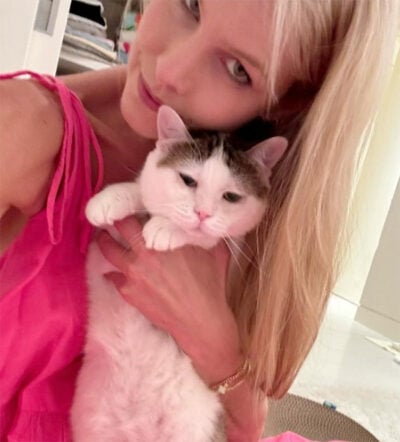
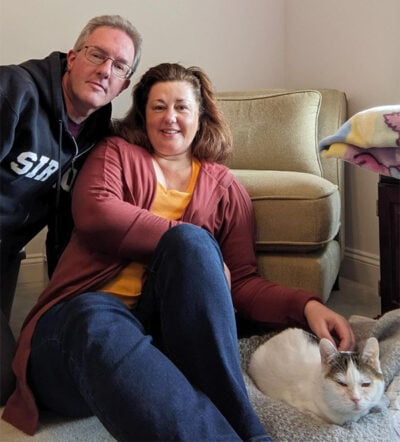
Until she was rescued, Delores never got the TLC she deserved. So, in honor of October being National Pet Wellness Month, I want to remind everyone to take a moment to schedule their pet’s six-month/or yearly vet visits. In the meantime, there are many things we can do at home to maintain our pets’ health.
One task is nail trimming. For some reason, this is my specialty. One thing I make sure to do is start nail trimming at a very young age. Kittens who come to me always get their paws touched daily and I trim the tips often so they are used to it. But, of course, this is easier said than done! However, I do make sure they realize that I am the “boss!” There is no way I’m going to let them get their way and give up. If they are extra squirmy, I wrap them in a blanket and have someone else hold them tightly while I take out one paw at a time. Our Miss Petunia is so strong and tricky that I give her a dose of Gabapentin 20 minutes before, and that’s so helpful. I cannot emphasize enough the importance of regular nail trimming. If you absolutely cannot do it, please schedule a vet appointment.
Also, note abnormal behaviors. Is my cat using the litter box more frequently, meowing or howling more than usual, throwing up constantly, sleeping more, hiding, scratching his ears, licking herself incessantly, being more irritable than normal, not eating, overeating? Is her fur becoming dull, is he sneezing frequently, is her breathing labored, do I feel a lump on his body? Has my cat suddenly changed his/her routine? (Routines are very important to cats. Pebble, for instance, knows when it’s her dinner time to the minute! So, if your cat suddenly changes a routine, pay attention.) All of these things are signs of possible problems. Check with your vet.
Also, we brush all of our cats daily. Not only is it a bonding ritual, but so much fur comes out, even with our short-haired cats! And guess what? I don’t find any hairballs around! Neglecting this can be a form of animal cruelty, as we witnessed with recent 10-year-old foster Mr. Squishy, a gorgeous long-haired kitty who was surrendered because of a new baby. (UGH!) He was so matted that his fur was pulling on his skin; he was in pain! I don’t think he’d ever been brushed, and his nails were so long they were growing into his paw pads. Today he is in a home with people who show how much they love him by taking care of him.
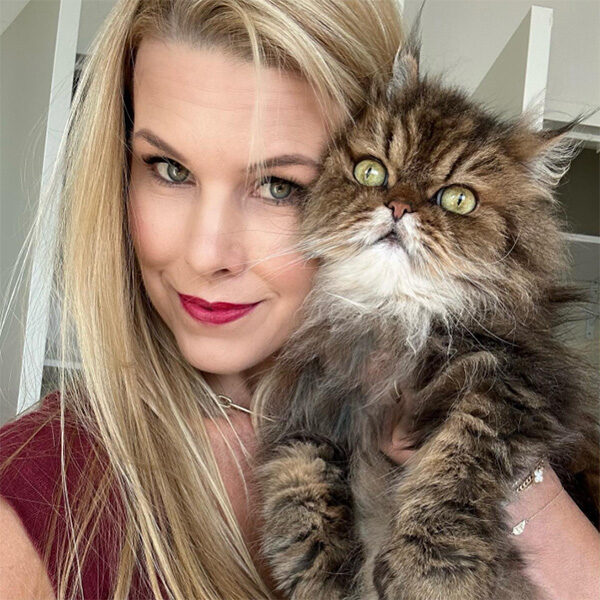
Squishy comfortable and grateful, post-grooming.
Finally, in case you hadn’t noticed (how could you miss it?), October is all about Halloween. Animal League America has some valuable safety tips to keep pets safe this time of the year.
My tips are simple. One: Keep your cat in a quiet room away from the door and all those odd-looking people who insist on ringing your doorbell over and over. You might think it’s fun. Cats think it’s horrifying. Two: Most cats hate costumes unless you’re Helen Rose Stern, who loves a little outfit. Personally, I’m all for dressing them up for a quick pic to post but I remove the costume immediately.
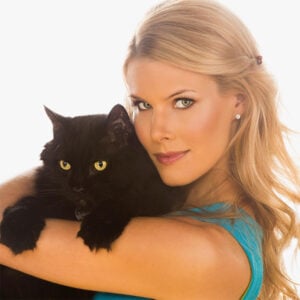 Photo: Howard Stern
Photo: Howard Stern
And October 27 is National Black Cat Day. I will never forget our gorgeous Leon Bear. In his honor, and to celebrate Delores’s wonderful adoption, I want you to meet Cleo, below.
Eleven-year-old Cleo was dumped by her family in her golden years just as she was getting sick. When she was rescued and brought to North Shore Animal League America, we sadly learned she has ocular cancer and severe arthritis.
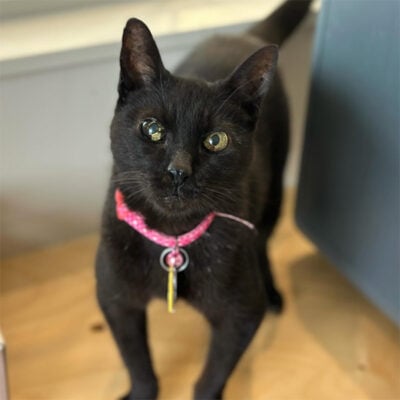 She responded well to treatment and immediately showed her gratitude to her gentle caregivers. Now, the best part: One day after I posted her story, she was adopted! I’m so happy that, with my colleagues at Animal League America, I was able to play a role in helping her find peace and love in a true forever home.
She responded well to treatment and immediately showed her gratitude to her gentle caregivers. Now, the best part: One day after I posted her story, she was adopted! I’m so happy that, with my colleagues at Animal League America, I was able to play a role in helping her find peace and love in a true forever home.
xo
Beth
P.S. If you haven’t already made reservations for our exciting live and virtual Celebration of Rescue on November 17, I urge you to check it out. As the event’s chairperson, I can’t wait to see everyone and join in honoring all the wonderful work we do together.
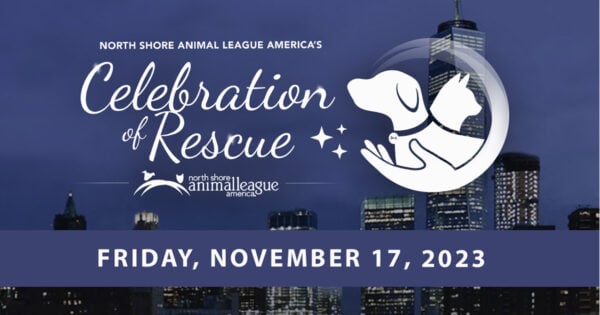
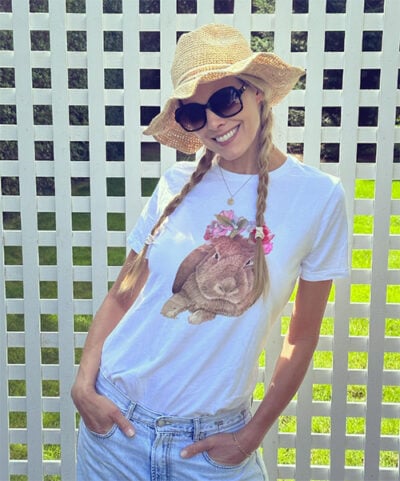 P.P.S. If you’re starting to think about holiday gifts, please consider my new tees, featuring an original Howard watercolor of our beautiful Jessica Rabbit printed on cotton. One hundred percent of my profits go toward saving more lives. I miss Jessica Rabbit so much but she’s helping me help others now. To get yours while they last, visit www.bethsfurryfriends.com. I’m wearing a medium.
P.P.S. If you’re starting to think about holiday gifts, please consider my new tees, featuring an original Howard watercolor of our beautiful Jessica Rabbit printed on cotton. One hundred percent of my profits go toward saving more lives. I miss Jessica Rabbit so much but she’s helping me help others now. To get yours while they last, visit www.bethsfurryfriends.com. I’m wearing a medium.



